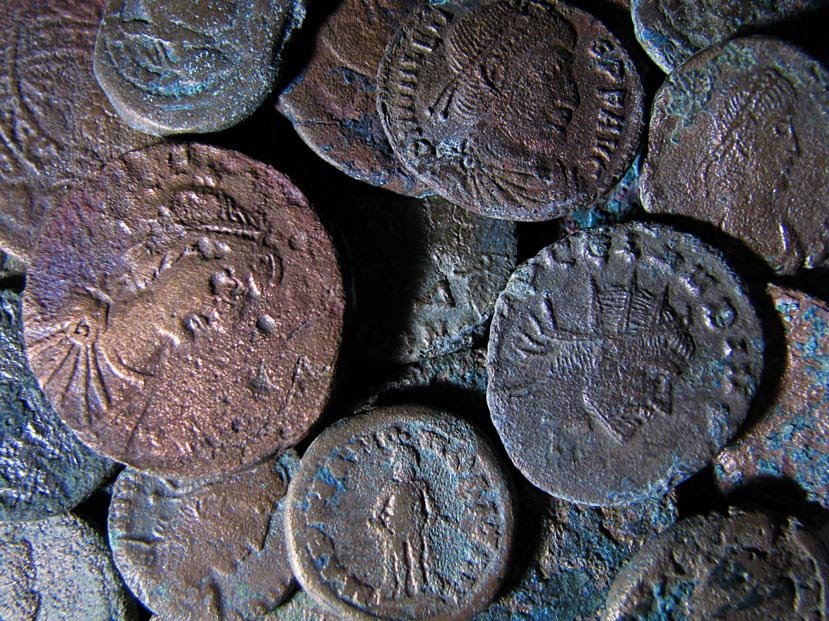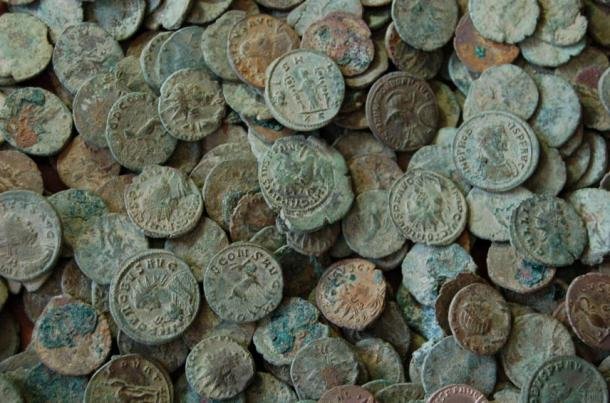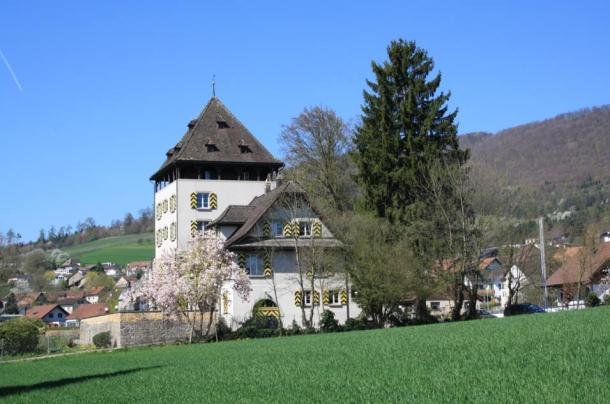in-a-stunning-revelation-farmers-in-switzerland-stumble-upon-a-colossal-cache-of-over-4000-ancient-roman-coins-crafted-from-solid-gold-unveiling-a-mesmerizing-glimpse-into-historys-hidden-richesA Swiss farmer made an incredible find in his cherry orchard when he spotted something shimmering in a molehill and subsequently discovered a trove of 4,166 bronze and silver Roman coins. The hoard has been described as one of the biggest treasures ever found in Switzerland.

The Agence France Press reports that the finding occurred in Ueken, in the northern canton of Aargau in Switzerland, a short distance away from an ancient Roman settlement in the nearby town of Frick. The Swiss fruit-and-vegetable farmer contacted the regional archaeological service, which took several months to carefully excavate all the coins, some of which were buried in small leather pouches.
Promoted content



In total, the trove weighs an incredible 15kg (33lb) and consists of ancient Roman coins stretching from the reign of Emperor Aurelian (270 – 275 AD), known for restoring the Empire’s eastern provinces after his conquest of the Palmyrene Empire, to the reign of Maximian (286 – 305 AD), who carried out campaigns to relieve the Rhine provinces from the threat of Germanic invasion. The most recent coin discovered in the hoard dates to 294 AD.
“As an archaeologist one rarely experiences something like this more than once in your career,” Swiss archaeologist Georg Matter told Spiegel Online .

The coins are in excellent condition with the prints still legible, leading experts to suspect that the coins were taken out of circulation shortly after they were minted, but retained for the value of the bronze and silver.
The region in which the coins were found has a long history, and is believed to have been the location of a large Roman settlement between the 1 st and 4 th century AD. Remains of a 2 nd century Roman estate have been found along the main road in the town of Frick, and a 4 th century fort was discovered below the church hill. The Roman era name for Frick (Latin: Ferraricia) refers to a Roman iron ore mine in the area.

The farmer who discovered the treasure will receive a finder’s fee, but according to Swiss law, the coins will remain public property and are set to go on display at the Vindonissa de Brugg Museum in Aargau.






